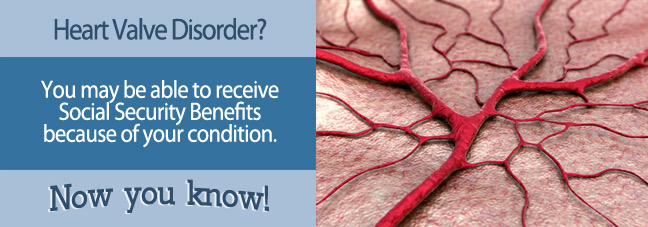If you are one of the approximately 8 million Americans who is impacted by valvular heart disease, and if you are unable to work as a result of your heart condition, there may be help available. The Social Security Administration (SSA) oversees the Social Security Disability Insurance (SSDI) program, an initiative aimed at offering financial assistance to individuals with severe health conditions.
To determine if your heart valve disorder is severe enough to warrant a disability award, you should consult the “Blue Book.” The Blue Book was created to assist claimants, as well as their health care providers, to understand what conditions might qualify for disability benefits, as well as what medical information is needed to support a heart valve disorder claim.
How the Blue Book Can Help You Medically Qualify for Disability with a Heart Valve Disorder
Cardiac valve disorders, such as mitral valve prolapse or aortic valve stenosis, can have a significant impact on an individual’s ability to work. The Blue Book can offer guidance on what signs and symptoms need to be present to be considered for a disability award.
Unlike many other conditions, heart valve disorders do not have a specific listing in the Blue Book. Therefore, someone suffering from a valve disorder will need to meet the listing of another related cardiac condition. Cardiovascular disorders are listed in section 4.00 of the Blue Book.
Individuals with heart valve disease may qualify for benefits using sections 4.02 (chronic heart failure), 4.05 (recurrent arrhythmias), or 4.06 (symptomatic congenital heart disease). Further, heart valve problems frequently have an underlying cause. For example, an infection can sometimes lead to a heart valve disorder. Therefore, finding the cause of the heart valve disease might help determine the best approach to applying for Social Security disability benefits.
Furthermore, heart valve disease can lead to other serious health problems. For example, a valve disorder predisposes an individual for a possible stroke. As such, it’s important to identify the cause of the heart valve disease, as well as the health impact that the valve disease has on other body systems.
Heart Valve Condition List
If you have one of these medical conditions that impact one of your heart valves you might be eligible for Social Security disability benefits:
- Atresia
- Aortic stenosis
- Mitral valve stenosis
- Pulmonary valve stenosis
- Tricuspid valve stenosis
- Aortic regurgitation/insufficiency
- Mitral regurgitation/insufficiency
- Pulmonary insufficiency
- Tricuspid insufficiency
- Bicuspid aortic valve
- Mitral valve prolapse
- Endocarditis
- Rheumatic heart valve disease
Before your application for disability benefits can be approved you will have to include medical documentation with your application that proves you meet the Social Security Administration’s requirements for disability benefits.
Every condition that is eligible for disability benefits is listed in the SSA’s Blue Book along with a unique set of requirements.
For example, in order to qualify for disability benefits with aortic stenosis you’d have to provide medical documentation showing that you have one of these:
- Systolic failure with left ventricular end diastolic dimensions greater than 6.0 cm or ejection fraction of 30 percent or less during a period of stability.
- Diastolic failure with left ventricular posterior wall plus septal thickness totaling 2.5 cm or greater on imaging, with an enlarged left atrium greater than or equal to 4.5 cm, with normal or elevated ejection fraction during a period of stability.
And you would have to meet other requirements as well. Not every heart valve condition is listed in the Blue Book. If the condition you have isn’t listed in the Blue Book you can still qualify for disability benefits if you have enough medical evidence to prove that your condition is disabling and your can’t work because of it.
What Evidence Do I Need to Win My Heart Valve Disorder Claim?
Whether or not an individual qualifies for disability benefits will depend entirely on the medical evidence provided. The Blue Book outlines the proof required by the SSA for cardiac conditions.
First, the SSA will want a history and physical from a cardiologist. This report should include the onset of the valvular disorder, symptoms experienced such as shortness of breath, fatigue, or heart palpitations, any pain suffered, and a history of fainting or near fainting.
A detailed physical exam should also include the impact that the heart valve disorder has on activities of daily living, such as the ability to do household chores, self-care, recreational and social activities, and of course, the ability to work. The treating physician should report what the individual can still do despite treatment, as well as the prognosis for improvement.

Medical testing results should include a resting electrocardiogram (EKG), as well as an echocardiogram. If the heart valve disorder has resulted in the need for surgical intervention, all operative reports should be included.
It is important to provide the SSA with a longitudinal record that covers at least three months of observations and treatments. As with all conditions listed in the Blue Book, a heart valve condition needs to last, or be expected to continue, for at least one year.
Can a Lawyer Help Me Win My Claim for Heart Valve Disorder?
Since heart valve disorders are not listed in the Blue Book, an individual who is unable to work due to a cardiac valve condition will need to meet another listing in the Blue Book.
It can be challenging to determine the exact approach when applying for disability benefits. Therefore, securing the services of an experienced Social Security lawyer can be very helpful. A qualified disability lawyer will be able to guide you through the application process, as well as help you through the possible appeals process.